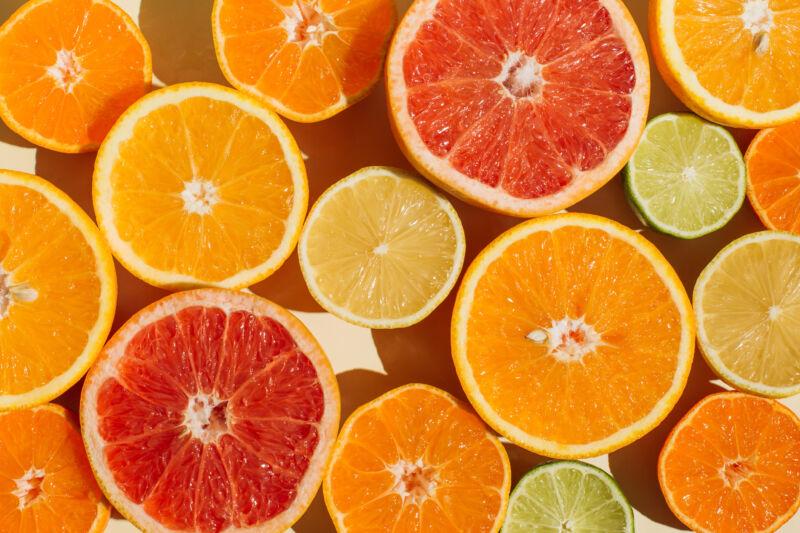
In the US, for orange juice to be labeled as such, it must be 90 percent sweet orange, or Citrus sinensis. Thus, citrus producers in the US have long planted 90 percent Citrus sinensis. But this cultivar is extremely susceptible to the bacteria that causes citrus greening disease, which has devastated the near-monocultural Florida crop. There is as yet no way to control the disease; the most effective way to deal with it would be to find citrus cultivars that are resistant to it and breed them with sweet orange to grant them disease resistance.
Sweet oranges are a hybrid of mandarin and pomelo and are not especially genetically diverse. Any disease-resistant citrus we know of, however, does not taste like sweet orange, so breeding with it will produce fruit and juice with off flavors. It has been difficult to define and quantify those off flavors, though, because it has been difficult to define and quantify the components essential for proper orange flavor.
Now, researchers at the USDA Agricultural Research Service performed a comprehensive chemical evaluation of 179 different citrus combinations—oranges, mandarins, and assorted hybrids—and cross-referenced their chemical compositions with evaluations of orange and mandarin flavors in juice samples performed by a “trained panel.”
Twenty-six compounds were identified by a statistical model as being important in predicting orange versus mandarin flavor. Some of these were positively associated with orange flavor—i.e., having more of the compound meant more orange flavor. Others were negatively associated with it, meaning that having less of those compounds made the juice taste more orange-y.
The study identified seven chemicals that differentiate orange flavor from mandarin flavor and one previously undescribed gene that controls the synthesis of six of them. Its activity is induced as the fruit ripens.
This work should facilitate the breeding of disease-resistant but tasty orange hybrids, and the DNA marker for orange flavor could be used to screen seedlings to see which will yield the most flavorful fruit before they ripen.
Science, 2024. DOI: 10.1126/sciadv.adk2051

